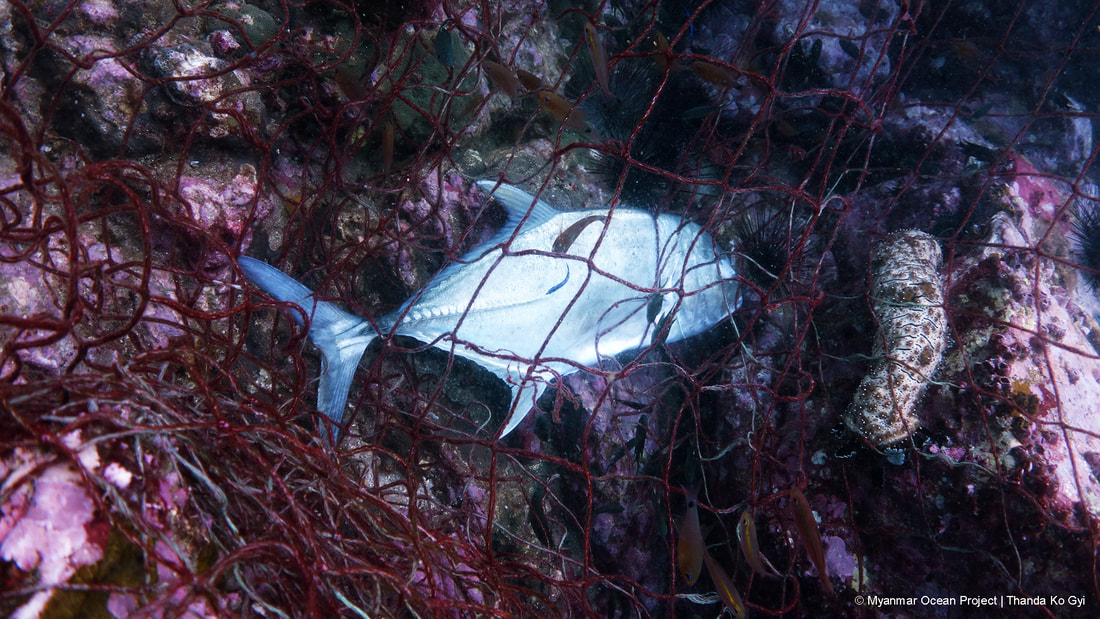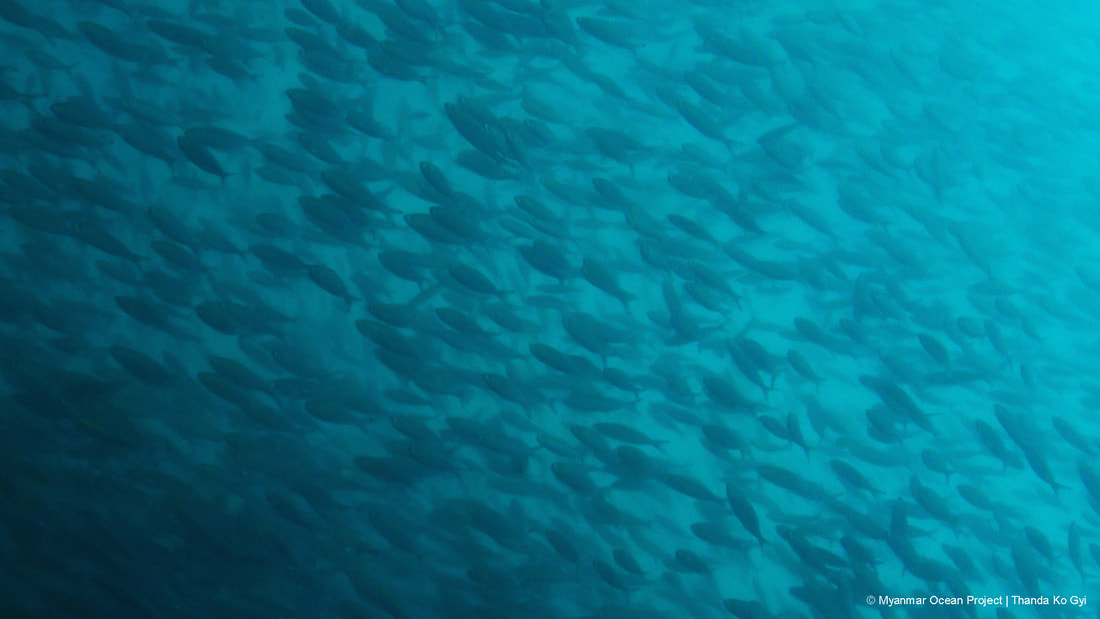|
By Sophie Gotthardt Our boat is gently rocking side to side with the rhythm of the waves crashing against it. The sky is clear and the late afternoon sun gives everything a golden glow. I can already see that the sunset will be beautiful, but right now we’re racing against the clock. We’re in search of something big. “We’re not far off!”, yells the captain. His voice is almost completely drowned in the clattering sound of the engine. We’re standing on our boat’s roof, trying to counterbalance the vessels swaying movements while covering our eyes from the blinding sun with both hands. Everyone is watching the movement of the water closely, looking for any clues about what might be awaiting us below the surface. Sunset is getting closer and we’re running out of time. Diving with strong currents is one thing, but doing so while it's getting dark can be dangerous. We’re on a treasure hunt. Our mission is to find a big, submerged pinnacle, in fact three of them in close proximity - a place only a handful of local fishermen are familiar with. But why do we need to find this particular spot? The goal behind our expedition to the Mergui Archipelago is to survey and identify ghost net hotspots. That means we’re looking for sites, where discarded fishing nets get entangled and endanger marine life. So what does that have to do with our mysterious pinnacle? Once a net gets dropped into the ocean it floats with the current until it gets stuck somewhere, possibly on a rock, a coral bommie, or a pinnacle. The pinnacles we’re searching for are located right in between the open ocean and an island channel, where currents get really strong because big water columns are squeezed through a small area. The currents carry anything from driftwood, plastic trash, and fishing nets into the open ocean. Our pinnacle rising up from the ocean floor is one of the few obstacles for drifting matter to get entangled. Why are nets stuck on a random pinnacle a problem? Strong currents don’t only bring lots of trash and nets. They also bring a staggering amount of marine life. Currents carry plankton and larvae from many places, leading to high biodiversity and wide gene pools wherever they pass by. Pinnacles in particular offer a rich substrate that corals, sponges, and other marine life use to form nurseries, which are, in return, a safe shelter for larvae and juvenile reef fish. Healthy and diverse reefs help to sustain the food chain for bigger predators like trevallies, groupers, and sharks. In addition, pinnacles in the open ocean offer a rest stop for big pelagic fish like manta rays and whale sharks. Pelagic species like oceanic manta rays or sharks use these oceanic oasis for getting cleaned by cleaner wrasses in what we call a cleaning station. In other words, pinnacles in the open ocean are often teeming with marine life. Therefore, ghost nets can cause a great deal of harm in these spots. Imagine a big nylon net getting stuck between two underwater pinnacles. The net will undoubtedly injure and kill lots of marine life without being of any use for the fisheries themselves. Over time, it will reduce not only the biodiversity of the ecosystem but also the catch of fishermen in the area. How are we helping? Removing nets from biodiversity hotspots, like our pinnacle, is, of course, only a short-term solution. The long-term goal must be to protect the area and prevent ghost nets from ending up in these places. It is by collecting data and proving the existence of a biodiversity hotspot for threatened or endangered species like the oceanic manta ray that we can make a difference. Establishing Marine Protected Areas (MPA) can help to put a stop to unsustainable fishing practices and make the health of Myanmar’s ocean a priority. “I think there might be something over here!“, Ben shouts through the engine noise pointing northeast. The surface looks perfectly flat, a sign for upcoming water. Not too far from the same spot, the water appears choppy - a sign for a downward current? A quick look on my dive computer tells me that we have to jump in right now or we’ll miss our chance. We put on our gear, set our compass towards the direction of the suspected pinnacle, and jump in. Gripping onto the anchor line we slowly descend into the unknown. The visibility is poor and the ocean floor is still too far off to see. The current is dragging us south. 18 meters and still no sign of life. The water underneath us remains pitch-black like a starless sky at night. 20 meters and still nothing but darkness. Maybe we’re in the wrong spot after all? I’m looking back to check on my dive buddies. I can tell that Thanda is in between curious and concerned. Finally, we’re hitting the ocean ground. 31 meters. Everyone seems relieved that we reached the floor. We follow our compass heading and we find ourselves in an underwater desert decorated with a few whip corals, but not much life despite that. We slowly push our way forward into the unknown. Suddenly a school of yellow-tail fusiliers appears - a good sign that we are getting closer to a reef. Now I also start hearing the crackling sound of a busy reef. Still following the disappearing fusilier school I catch the sight of another passing school - a bigger one. The crackling sounds get louder. I turn around to look at my buddies. They seem just as excited as me. We’re onto something. Thanda gets her camera in position. A huge barracuda school appears and starts circling us. They slowly start forming a tornado and we’re in the middle of it! I almost burst out laughing. The barracuda school vanishes as quick as they appeared and opens the view to something much bigger - the pinnacle. We finally made it! After exploring this hidden paradise for a bit, the sunlight disappears. The sun has set. We have to ascend.
Everyone is excited about our discovery. In just one dive we had the pleasure to observe lionfish, surgeonfish, filefish, boxfish, parrotfish, pufferfish, butterflyfish, moorish idols, scorpionfish, pilotfish, big trevallies, fusiliers, barracudas, big groupers, and many more. We even spotted a potential cleaning station with five cleaner wrasses waiting for their next patient. We’re certain our pinnacle gets way bigger visitors passing by than groupers. And just as we’re about to leave this magical site, two mobula rays show up on the surface dancing with each other as if they wanted to reassure us. We're sad to leave already, but one thing is for sure: We’ll be back!
2 Comments
|
Archives |









 RSS Feed
RSS Feed